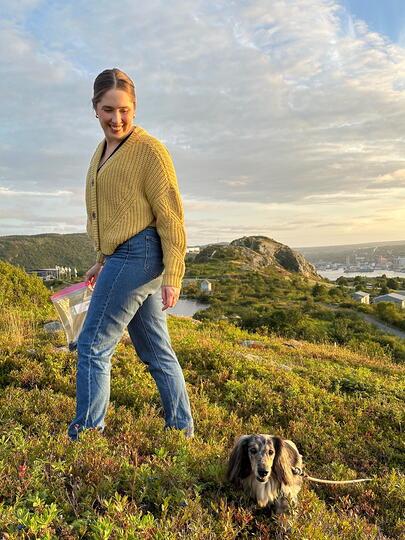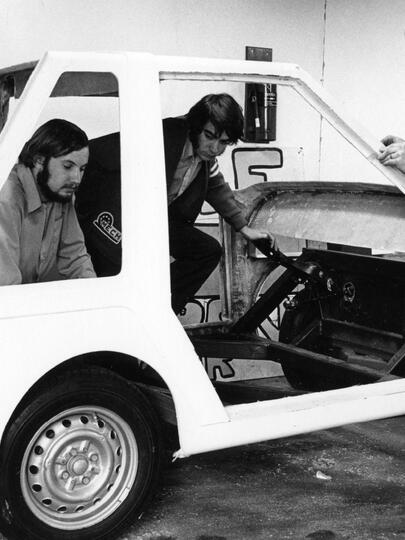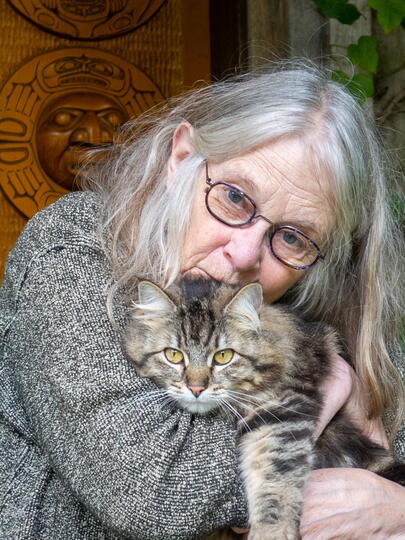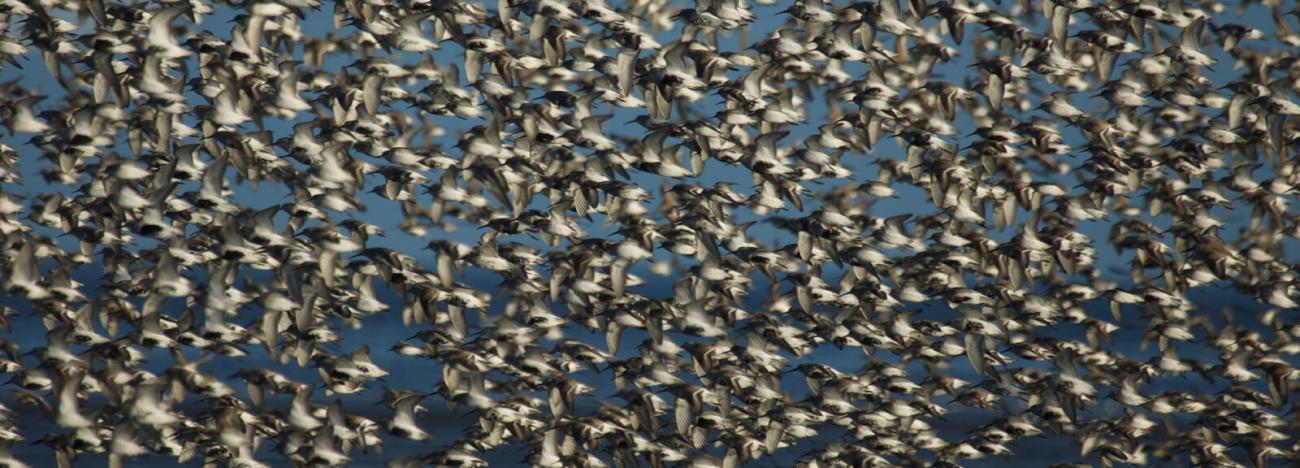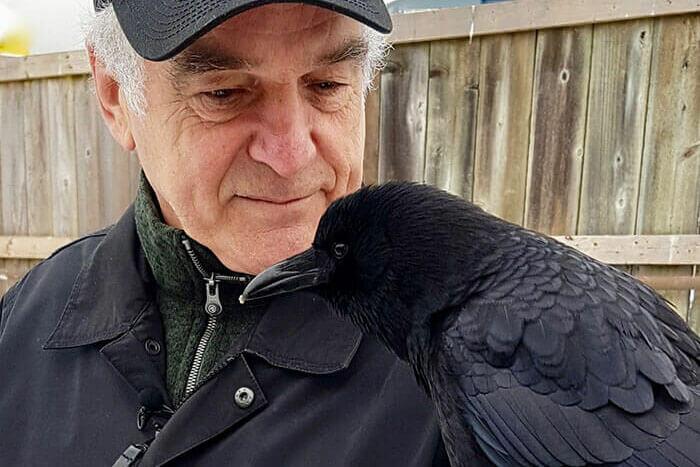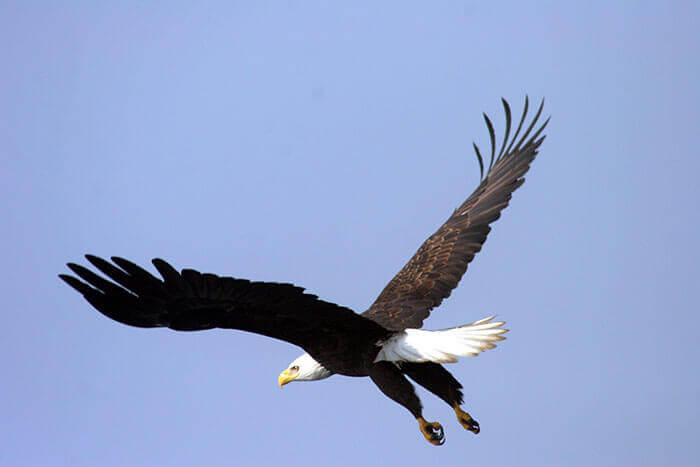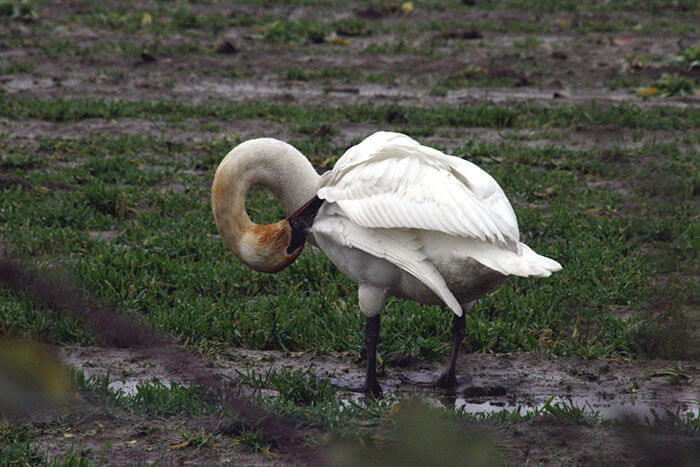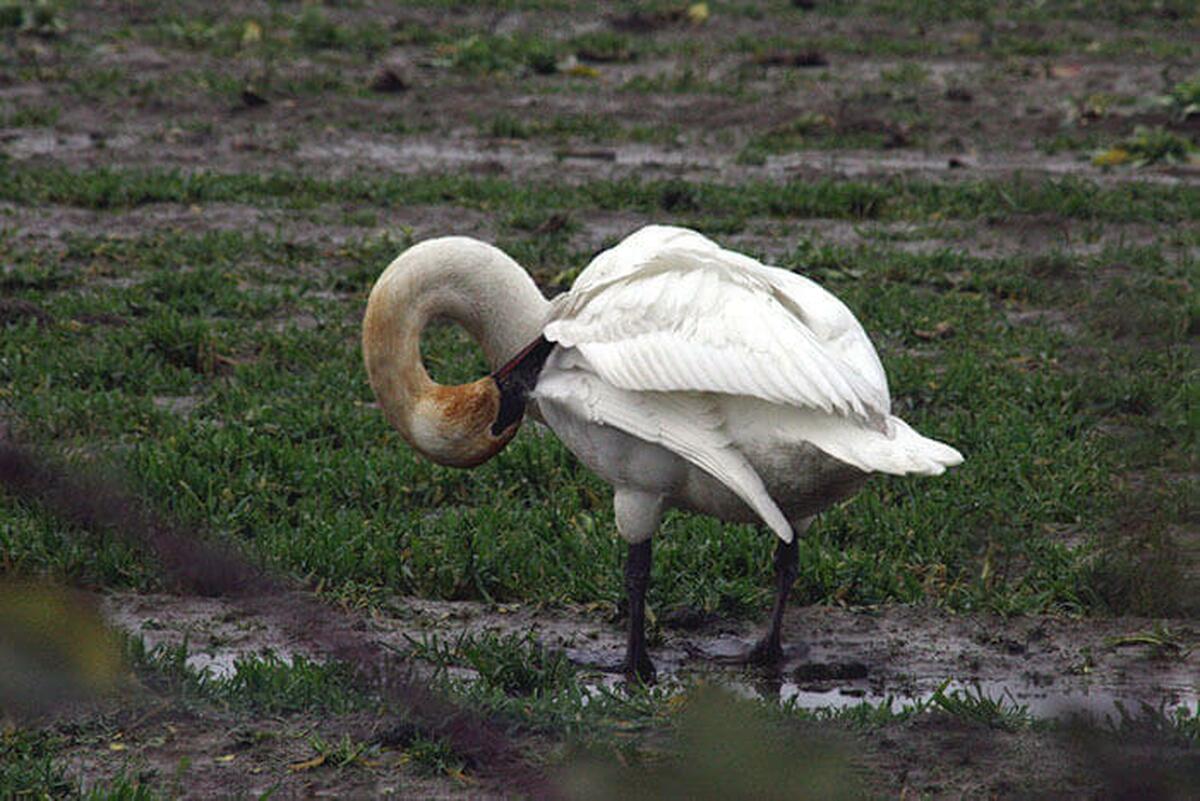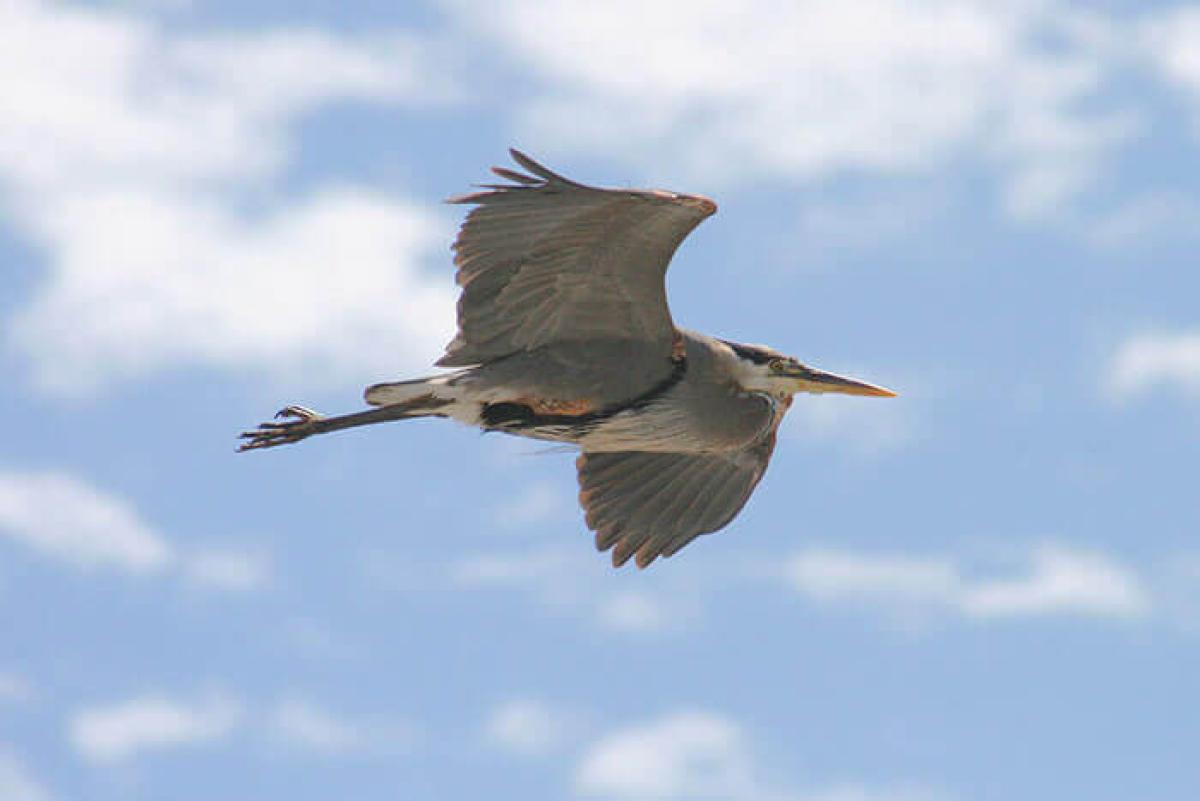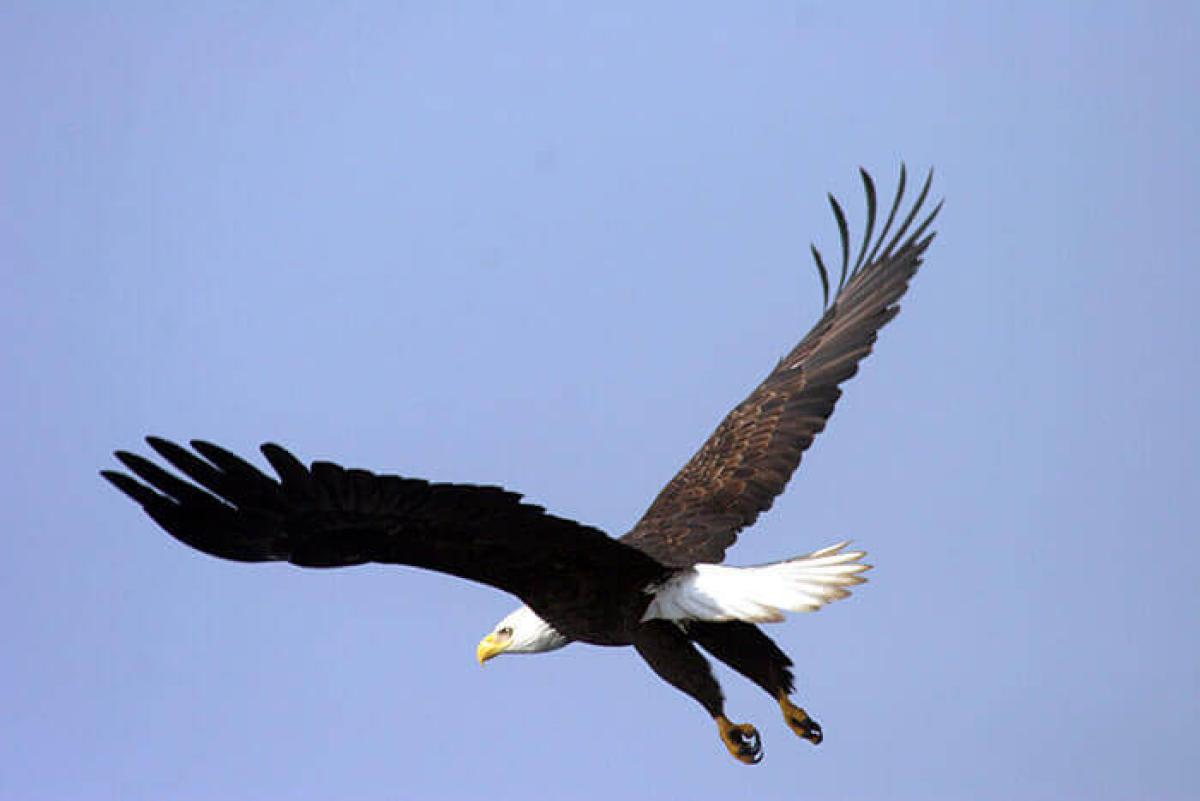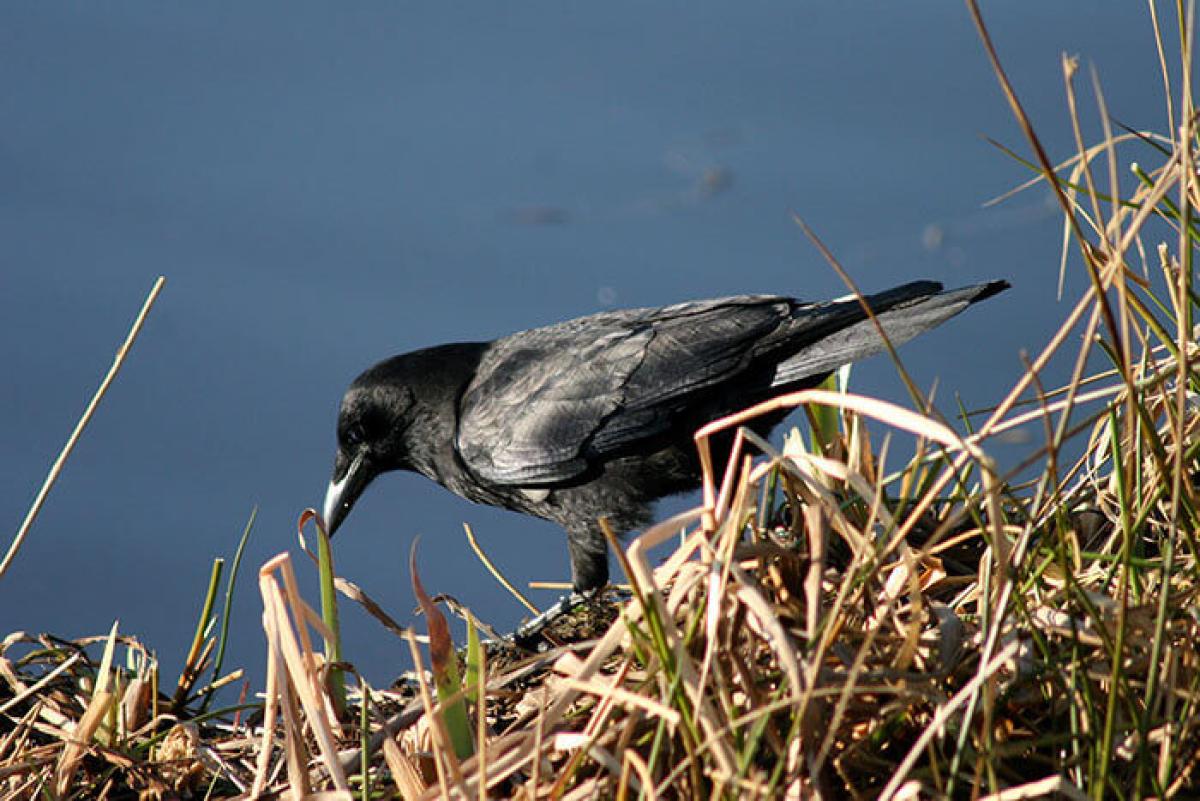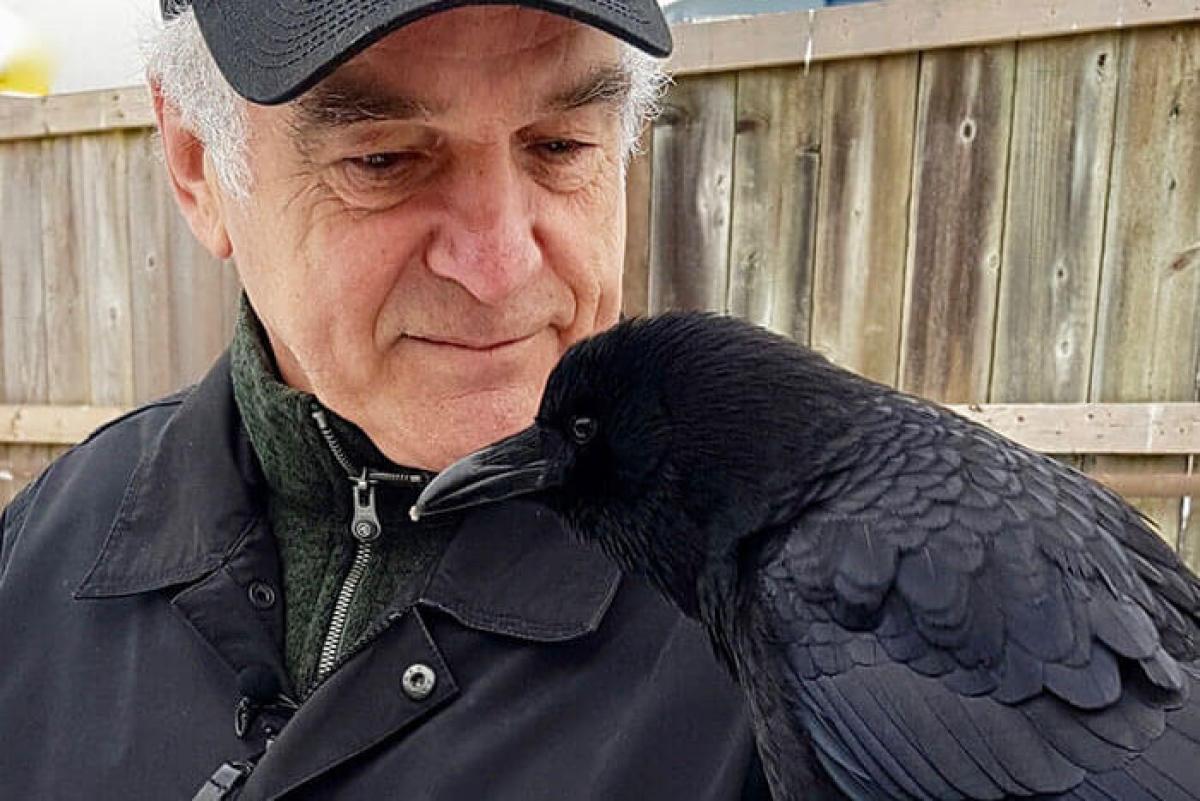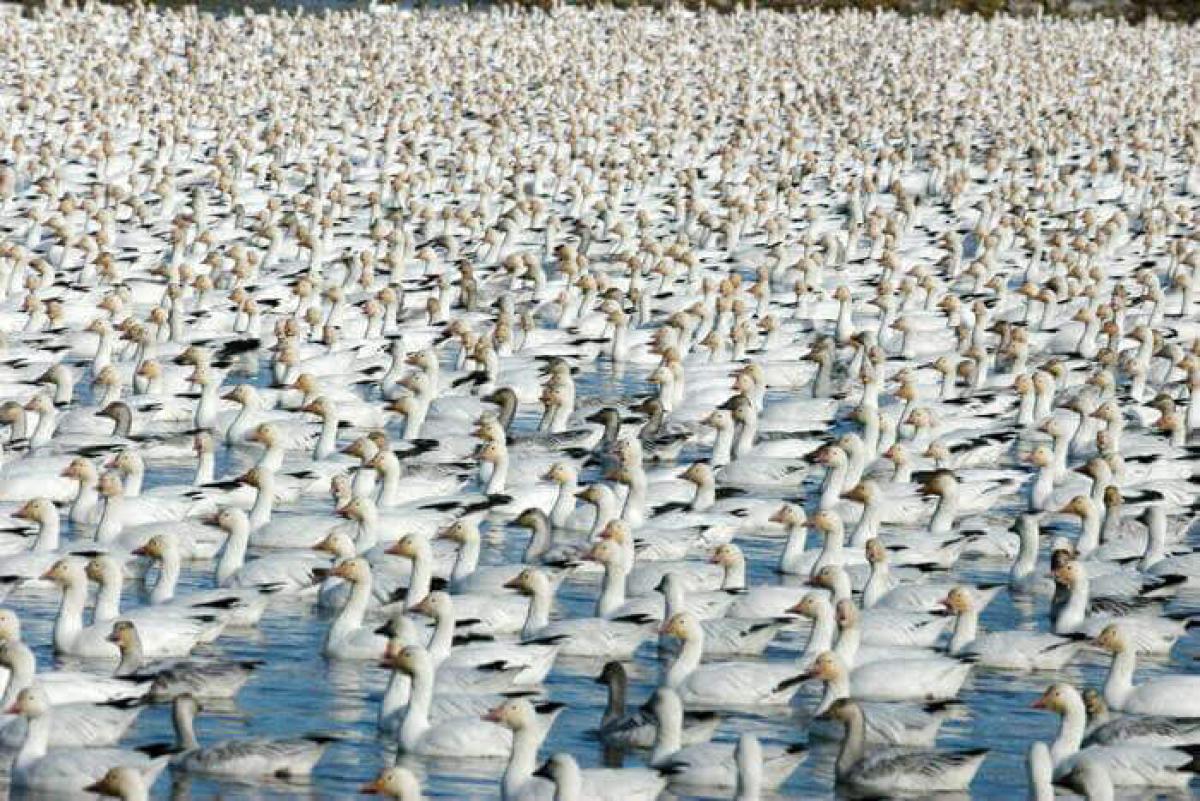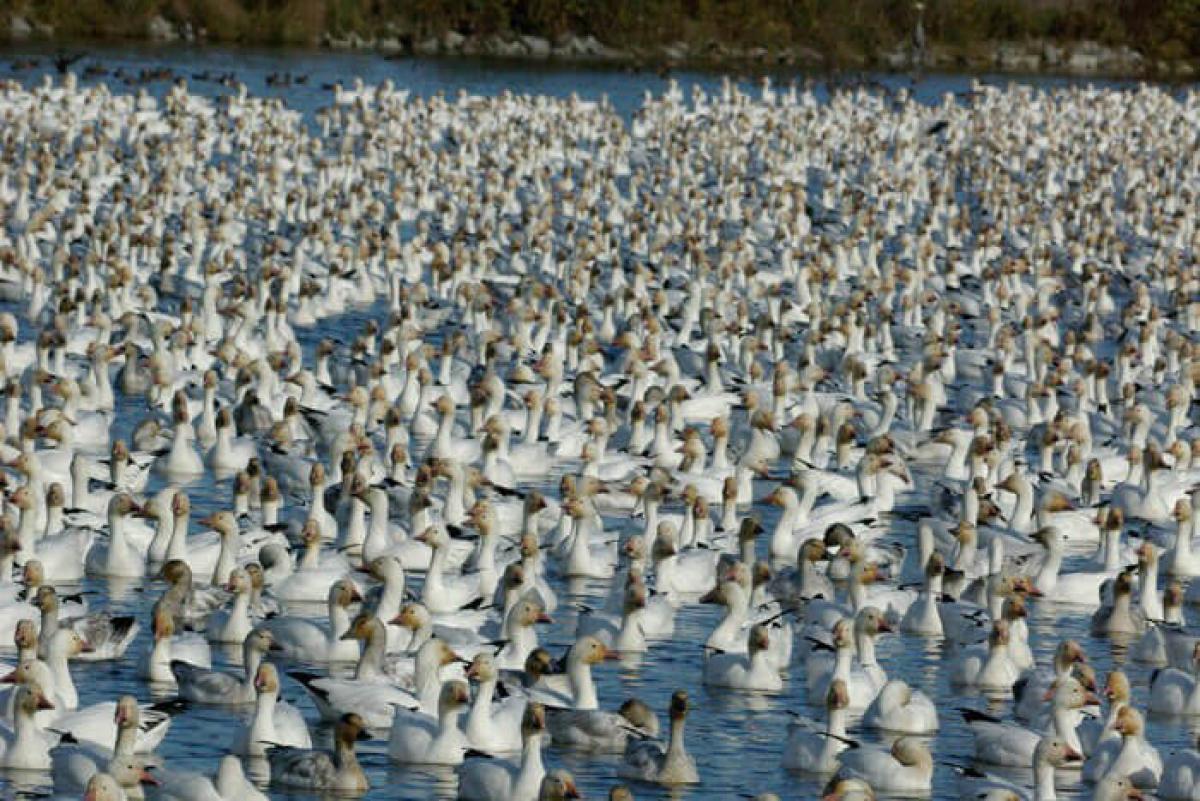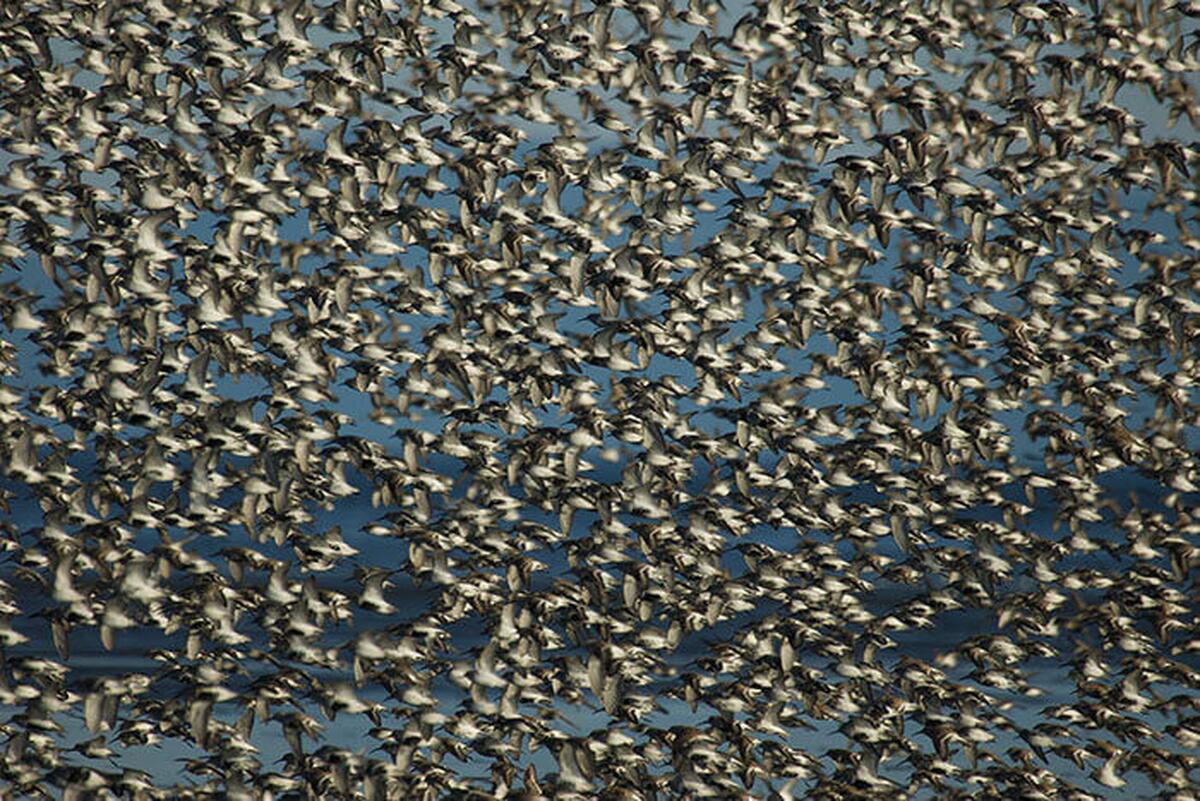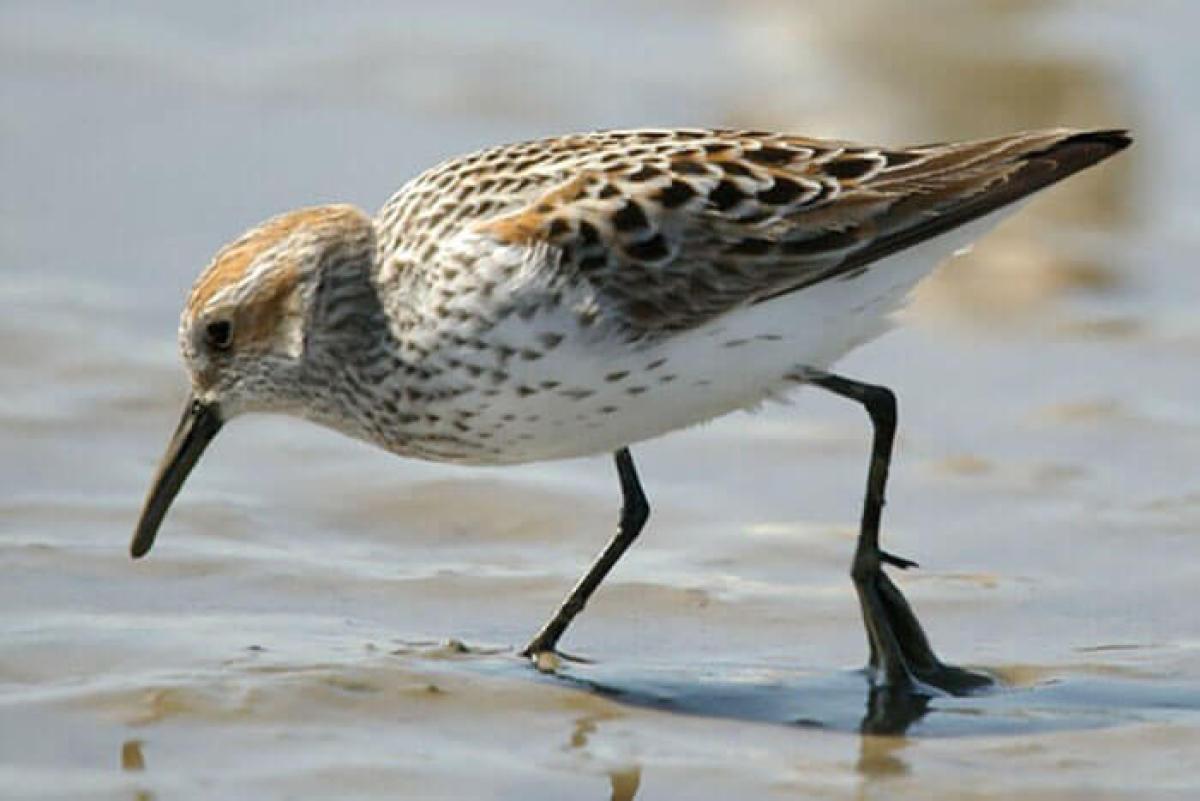Birds in Paradise
On January 1, 2017, ornithologist Rob Butler, PhD’91, set out to spot 150 bird species before July 1 as a way to celebrate Canada’s 150th. The only limit he set himself was that the sightings had to happen within the city of Vancouver, which meant that the UBC Endowment Lands and Pacific Spirit Park were off limits, as was Central Park, Burnaby Lake and Burnaby Mountain -- all bird-rich environments.
Colleagues told him he would sight 130 species easily and 140 with some difficulty, but spying 150 in Vancouver’s city limits might well be impossible. By June, he had booked 147 sightings, but was beginning to feel desperate about securing the final three. They would have to be of birds not often seen in these parts. On one of his trips through Stanley Park, he came upon a man walking with a rubber chicken named Hamish. “Oh no,” he thought. “Am I going to have to use a rubber chicken?” But in June he managed to spot a Vaux’s swift above Jericho Beach, a purple martin at Southlands and a band-tailed pigeon in Stanley Park. He’d achieved his goal with two weeks to spare. “It shows that Vancouver has a lot of bird species, from the downtown core to the shoreline,” he says. “It’s a rich, natural environment for birds.”
In order to get to the bottom of Butler’s passion for birds, I met up with him at Burnaby Lake in late June. When we arrived at 9:00 am, the air was filled with birdsong. “We’re a bit late for the dawn chorus,” he said. “At the first light you can hear 15 or 20 different species singing in one location. It’s quite amazing.” As we strolled along the path by the lake, he interspersed our conversation with bird sightings. “There’s the Swainson’s thrush,” he said, noting the flute-like call, “and there’s a little bushtit. Oh, and here’s a song sparrow and a spotted towhee.” He ticked them off like the professional ornithologist he is.
Butler holds an MSc from SFU along with his PhD from UBC. He worked for 27 years with the Canadian Wildlife Service as an ornithologist researching birds across the country and abroad. He has published in many journals, including a study of the social behaviour of the crow, which, he confesses, is his favourite bird. He has watched and listened to birds all over BC and beyond, through marshlands, alpine terrain, deserts and tropical forests. He’s also published The Great Blue Heron (UBC Press) -- based on his doctoral research studying that bird’s ecology -- and researched the migration and ecology of shorebirds. He’s now putting the finishing touches on a book about bird migration in collaboration with Audrey Benedict of Cloudridge Naturalists in Colorado. On top of that, he’s an accomplished artist and is currently working on a film. You can see his work on his website, robbutler.ca.
He has watched and listened to birds all over BC and beyond, through marshlands, alpine terrain, deserts and tropical forests.
For the past few months Butler has been co-organizing the Vancouver Ornithological Congress, an academic conference (not open to the public) that is being held this year in Vancouver for the first time. He’s also organizing, in conjunction with the Congress, the Vancouver International Bird Festival from August 19 to 26. Activities will include bird-watching outings, parades, workshops, photo competitions, speakers and events at the Vancouver Convention Centre, Science World, Grouse Mountain, Van Dusen Botanical Garden and other venues across the region. The website (vanbirdfest.com) lists events and speakers, and has a Bird of the Week feature that highlights local birds such as the northern flicker, red-winged blackbird, bald eagle and dark-eyed junco. Butler is expecting an attendance of 30,000 or more.
Also on tap at the festival: a huge Bird Expo that includes tours and events specifically to accommodate the increased interest of millennials and other young people in learning more about our feathered friends. “Hipster Birding” has become a thing. It’s a recent phenomenon that started in New York City and is currently sweeping the continent. Birders are transforming from the Tilley-hat set, with their printed field guides and notebooks full of scribbled sightings, and becoming tech-savvy participants awash in ornithophilia.
They’re also getting much younger. The Audubon Society recently estimated that there are more than 9 million birders in the US between the ages of 18 and 36. Conde Nast Traveller declared birding one of the hottest trends of 2017 among the younger set, and even the movies have gone on an avian binge. In 2014 The Birders’ Guide to Everything featured a 15-year-old bird fanatic, and The Big Year had Steve Martin, Owen Wilson and Jack Black vying for Birder of the Year title. In July, the Stanley Park Ecological Society hosted a “Rise of the Hipster Birdwatcher” tour around Lost Lagoon. There is also a competitive edge to birding, with “my life list is bigger than yours” conversations happening more and more.
“It’s a big thing, now,” Butler says. “It has to do with smart phones, the challenge and fun of the Pokemon craze, and all the bird apps available. It’s also an indicator that people are getting interested and concerned about nature and the environment.” In years past, bird-watching was seen by young people as a bit stodgy -- a hobby for retirees with time on their hands and a lack of interest in the modern world. Many people couldn’t tell a robin from a sparrow, let alone a varied thrush from a veery, and didn’t care to know. That, too, has changed. “People are surprised at how many birds they actually know. They know what a chicken is and a turkey. What about a duck? A crow? A robin? It doesn’t take long before people are getting cameras and apps on their phones and getting obsessed.”
Birders are transforming from the Tilley-hat set, with their printed field guides and notebooks full of scribbled sightings, and becoming tech-savvy participants awash in ornithophilia.
But, according to Butler, the movement goes beyond basic birding. Getting in touch with birds is a gateway to nature. It’s related to the forest-bathing movement, which suggests that time spent in natural environments boosts a person’s immune system, lessens high blood pressure and is a potent weapon in battling the everyday stress we all experience. On August 19, as part of the BirdFest, Butler will give a lecture on a new view of nature that could inspire and transform the lives of all people.
This new view of nature fits in perfectly with Butler’s concurrent passion for nature conservation. As president of the Pacific Wildlife Foundation, he extols the opportunities available to us living on the edge of the Salish Sea, an area that includes the waters from Puget Sound to the northern tip of Vancouver Island. He’s currently in the final stages of completing a film, Returning, which describes how we can evolve a Salish Sea ethos in our area.
“We’re on the Salish Sea, but unlike indigenous people, the rest of us have been slow to celebrate the culture, the food, music or the customs that developed here. The Pacific Wildlife Foundation sponsors dinners that are limited to locally produced foods. The Salish Sea diet, much like the Mediterranean diet, depends on the local climate.”
The film he is completing suggests there are foods that are native to our area – seafood, meat, herbs, vegetables – that could constitute a Salish Sea diet. This cuisine, plus local culture – both indigenous and newcomer – all have a connection to where and how we live. The film celebrates this connection and encourages us to get involved in it.
Like many retirees, Butler is busier now than he was when he was working, and he talks about his interests with an infectious enthusiasm. But walking through the trails at Burnaby Lake, it’s his interjections that really shine. “Look, there’s a black-headed grosbeak.” I can’t see a thing. “There. At the top of that tree.” Oh, yeah. Then: “Listen to that. It’s a common yellowthroat.” And later, “There’s a willow flycatcher up there, see?” I do, eventually.
It’s inspiring to be with someone who’s passionate about a topic, and Rob Butler is passionate about avian life. I asked him if Hamish the rubber chicken will make it to the Bird of the Week list on the vanbirdfest.com site. “No,” he laughed. “We’ve got plenty to go around.”

















